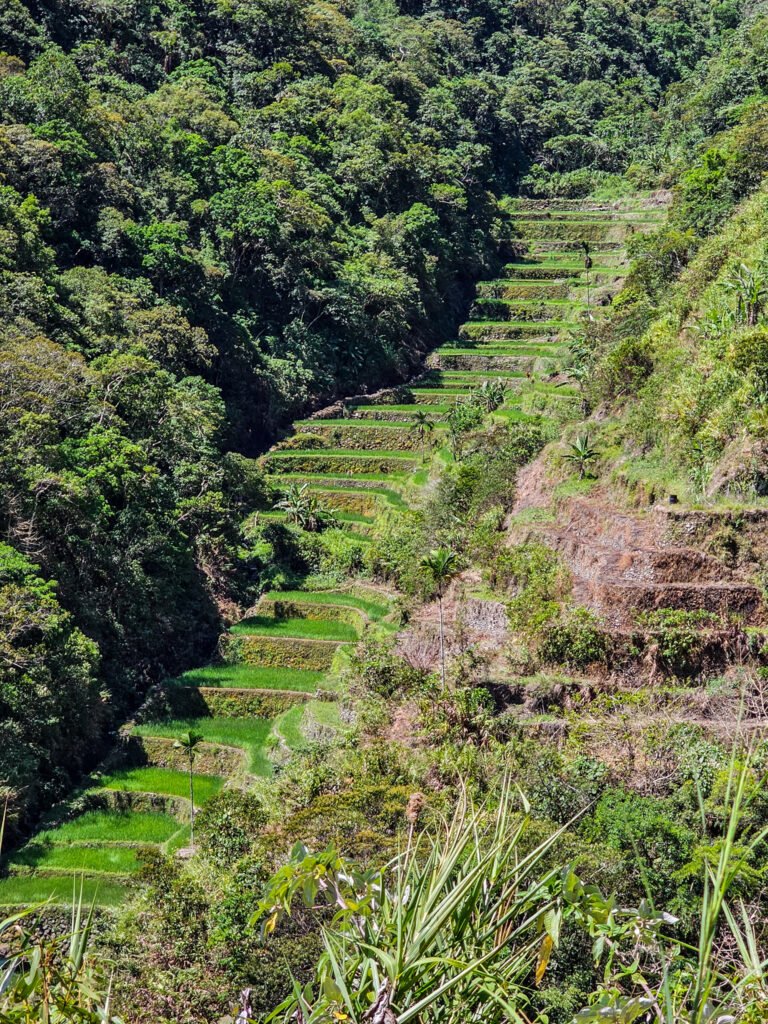
Nestled in the Cordillera mountain range of Northern Luzon, the town of Banaue is a gem of the Philippines known for its breathtaking rice terraces. These terraces, often referred to as the “Eighth Wonder of the World,” have been cultivated for over 2,000 years. The intricate landscape of the rice terraces tells a story of the ingenuity and endurance of the Ifugao people, who sculpted the mountains into productive farmland. The geographical location of Banaue, with its high altitude and cool climate, makes it an ideal place for rice cultivation, thus sustaining the local community for centuries.
Banaue’s historical significance is immense. The rice terraces are a testament to the ancient engineering skills of the Ifugao, a group of indigenous people who have lived in the region for generations. These terraces are not just a marvel of agricultural architecture but also a symbol of the Ifugao’s deep connection to their land and their cultural heritage. The terraces’ historical and cultural value was internationally recognized when they were designated as a UNESCO World Heritage Site in 1995.

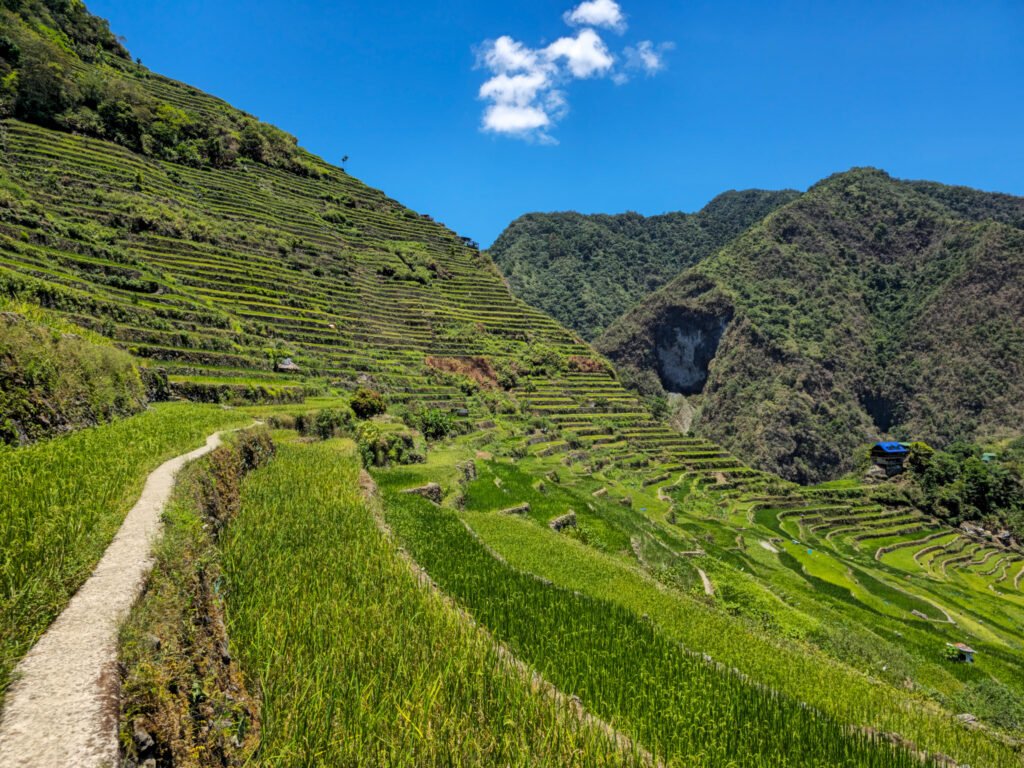
For both locals and tourists, Banaue holds a special place. It is a site where one can witness the harmonious blend of nature and human creativity. Tourism in Banaue is driven by the allure of its stunning landscapes and the opportunity to experience the unique Ifugao culture firsthand. Traditional Ifugao houses, indigenous rituals, and festivals are still prevalent, offering visitors an immersive cultural experience. The Ifugao’s craftsmanship is also evident in their wood carvings and handwoven textiles, which make for unique souvenirs.
In essence, Banaue is not just a destination; it is a living museum of the Philippines’ rich cultural tapestry and historical depth. It invites visitors to explore and appreciate the enduring legacy of the Ifugao people, making it a must-visit location for those seeking both natural beauty and cultural enrichment.
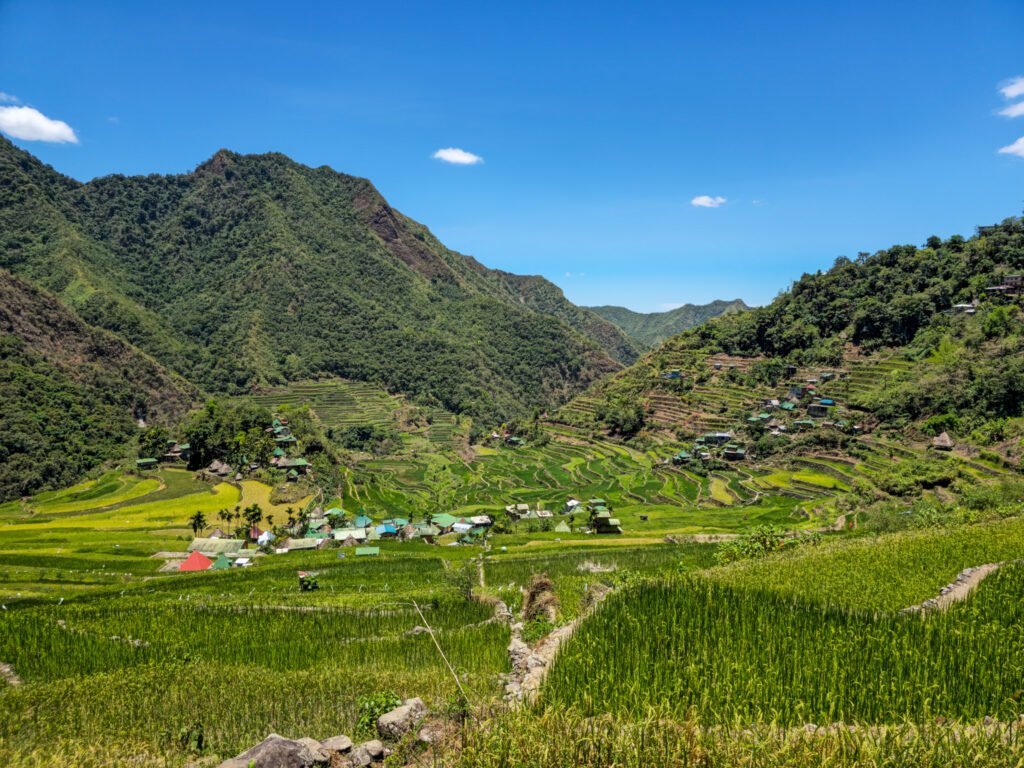
The Banaue Rice Terraces: A Marvel of Ancient Engineering
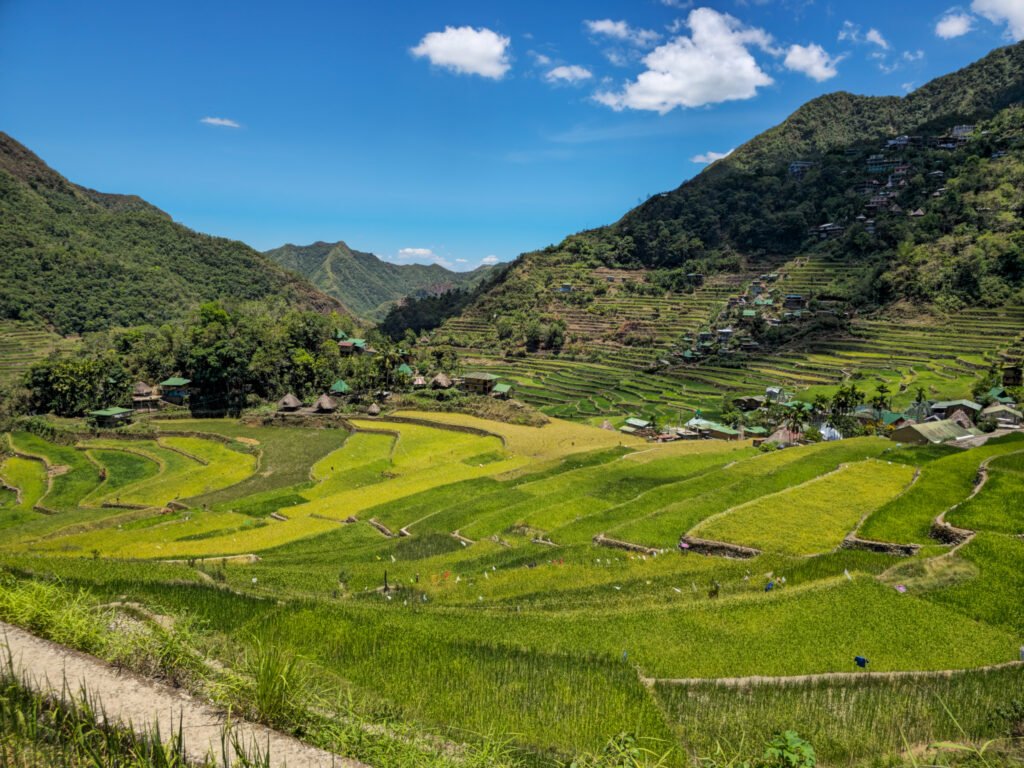
The Banaue Rice Terraces, often hailed as the “Eighth Wonder of the World,” stand as a testament to the ingenuity and resilience of the Ifugao people, who meticulously constructed this marvel over 2,000 years ago. Carved into the mountains of Ifugao in the Philippines, these terraces are an intricate network of rice paddies that showcase an advanced system of sustainable agriculture and irrigation, long before modern techniques were developed.
The construction of the Banaue Rice Terraces involved the careful manipulation of the mountainous terrain, creating tiered levels that could sustain rice cultivation. The Ifugao people developed a sophisticated irrigation system that diverted water from the mountain streams and rivers to each terrace level, ensuring a consistent water supply for the rice paddies. This ingenious system not only maximized the arable land in a challenging landscape but also maintained soil fertility and prevented erosion.


Today, the Banaue Rice Terraces continue to play a crucial role in the local economy, supporting the livelihood of the Ifugao community through both agriculture and tourism. The terraces remain a vibrant part of contemporary agriculture, with local farmers employing traditional farming techniques passed down through generations. These sustainable practices have allowed the terraces to endure and remain productive, highlighting the enduring wisdom of the Ifugao’s agricultural methods.
Visitors to the Banaue Rice Terraces can marvel at the breathtaking landscape and gain insight into the cultural heritage of the Ifugao people. The best times to visit are during the planting season from April to May or the harvest season from October to November. During these periods, travelers can witness the terraces in their full glory, either lush and green or golden with ripe rice. Each season offers a unique perspective and experience, making Banaue a year-round destination for those interested in history, culture, and natural beauty.
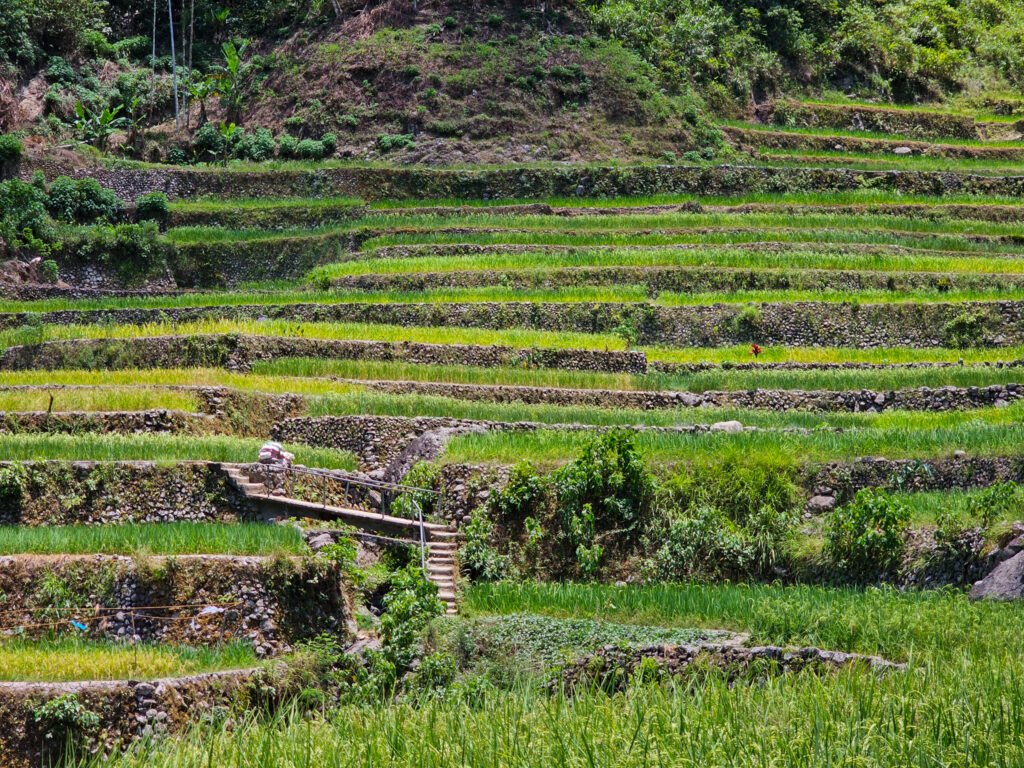
Top Attractions and Activities in Banaue

Banaue, a picturesque town in the Ifugao province of the Philippines, is renowned for its breathtaking landscapes and rich cultural heritage. One of the most iconic attractions is the Banaue Viewpoint, offering panoramic vistas of the UNESCO World Heritage-listed Banaue Rice Terraces. Carved into the mountains over 2,000 years ago, these terraces represent an extraordinary feat of engineering and a testament to the ingenuity of the Ifugao people. Visitors can capture stunning photographs and appreciate the grandeur of this ancient agricultural practice.
The Batad Rice Terraces, another must-see, are often considered the most well-preserved and beautiful among the terraces. Accessible via a scenic hike, the Batad Rice Terraces form an amphitheater-like shape that is truly awe-inspiring. Hiking enthusiasts will also enjoy the various trails that meander through the terraces and surrounding forests, providing opportunities to explore the region’s natural beauty up close.

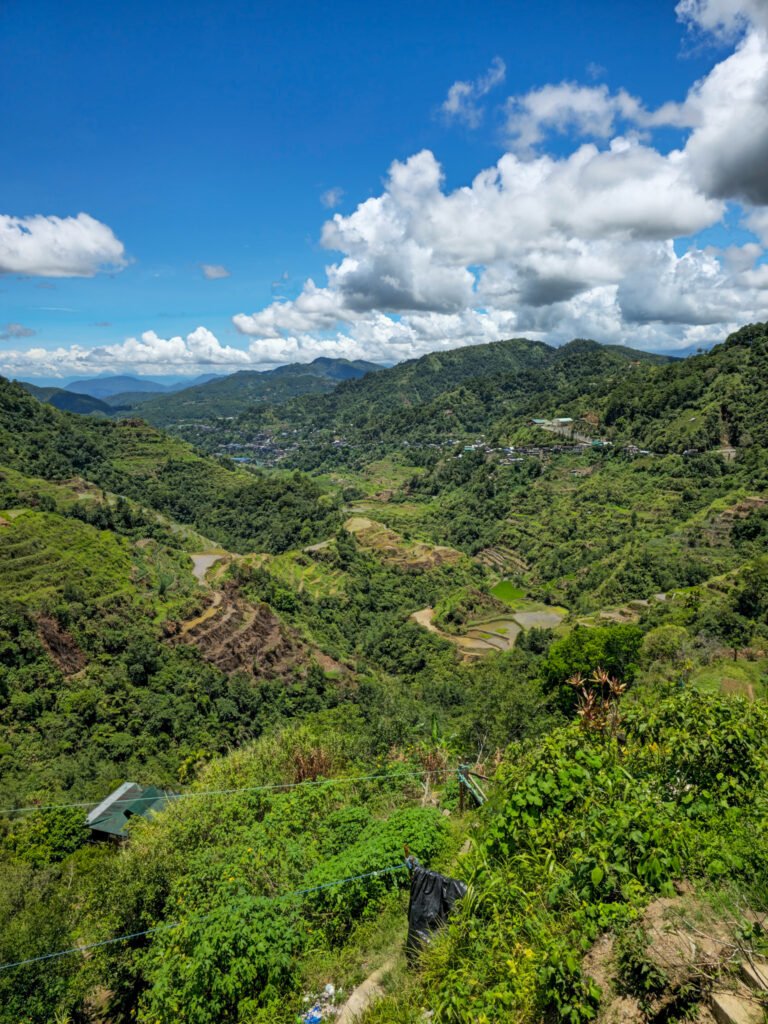
For those interested in cultural immersion, the Banaue Museum offers insights into Ifugao history, traditions, and artifacts. It is an excellent place to learn about the indigenous culture and the significance of the rice terraces. Additionally, witnessing cultural performances, such as traditional Ifugao dances and music, provides a deeper appreciation of the local heritage.
A unique experience in Banaue is staying in traditional Ifugao huts, which allows visitors to connect with the local way of life. These huts, with their distinctive architectural style, offer a glimpse into the traditional living conditions of the Ifugao people. Moreover, participating in rice planting or harvesting activities can be a rewarding and educational experience, highlighting the labor-intensive process behind the iconic terraces.

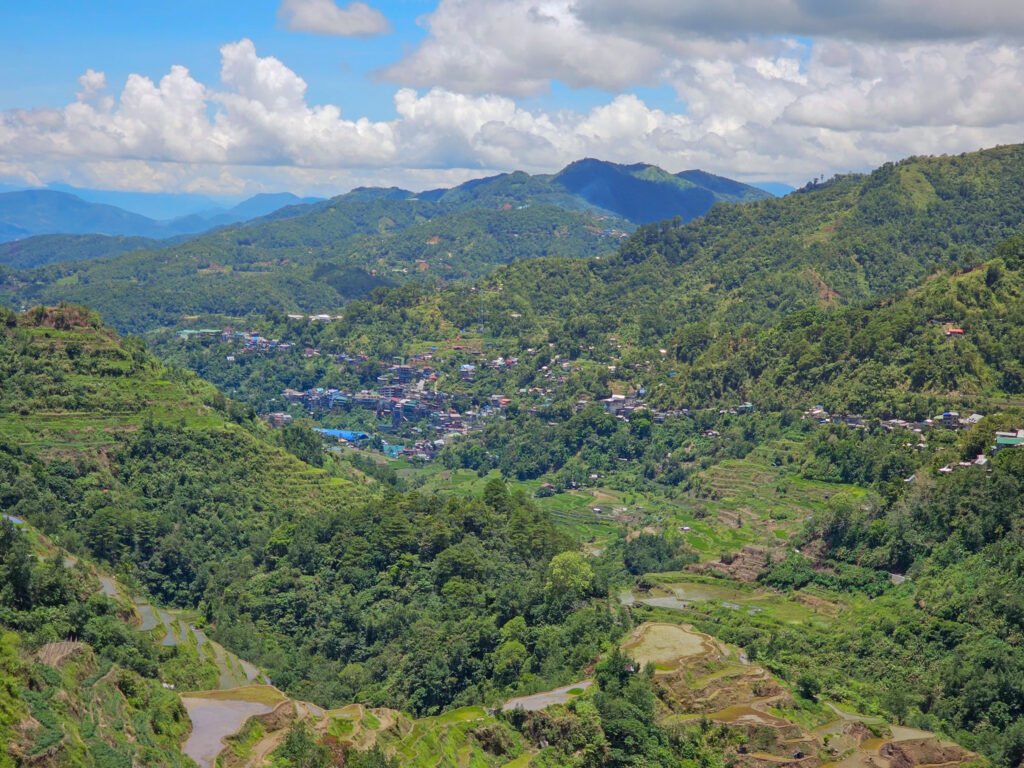
Nearby attractions also add to the allure of Banaue. The Tappiya Falls, located near the Batad Rice Terraces, is a stunning natural wonder. After a challenging hike, visitors are rewarded with the sight of cascading waters and a refreshing swim in the cool basin. Other scenic spots in the Ifugao region, such as the Hapao Rice Terraces and the Bogyah Hot Springs, further enrich the travel experience, showcasing the region’s diverse landscapes and natural beauty.
In essence, Banaue offers a blend of natural splendor, cultural richness, and unique experiences, making it a must-visit destination for travelers seeking to explore the wonders of the Ifugao region.
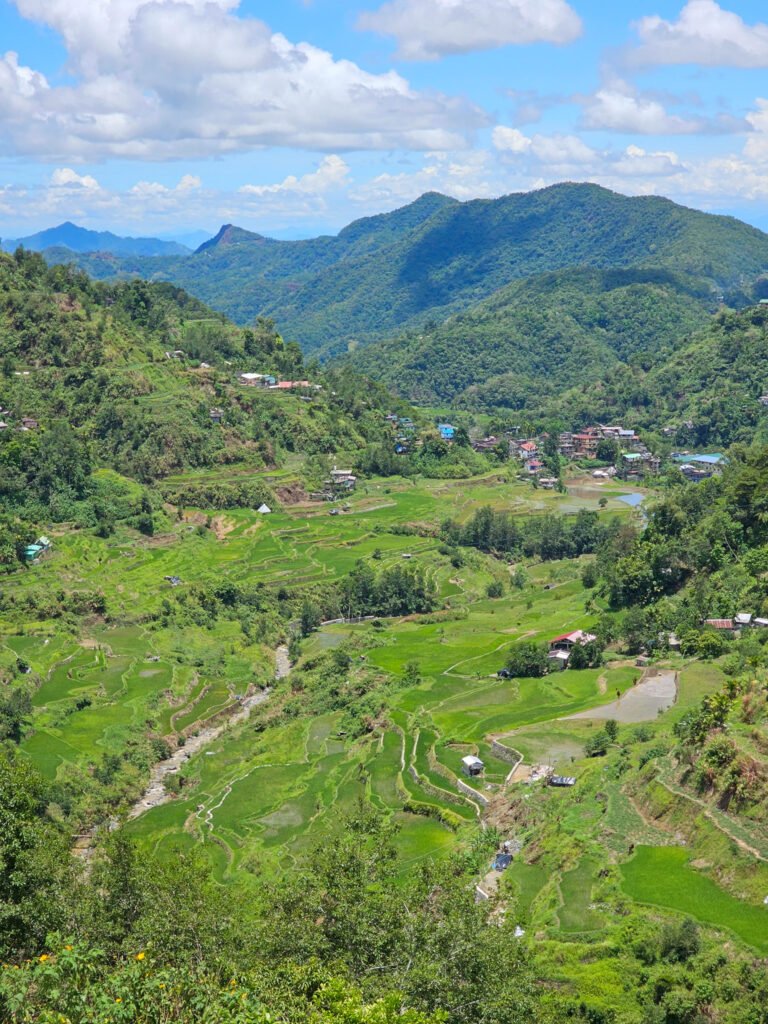
Travel Tips and Practical Information

Planning a trip to Banaue requires careful consideration to ensure a smooth and enjoyable experience. To get to Banaue, the most common route is via bus from Manila, which takes approximately 9-10 hours. Several bus companies offer nightly trips, allowing travelers to arrive in Banaue by morning. Alternatively, you can hire a private vehicle for a more comfortable journey, though it is significantly more expensive.
Once in Banaue, local transportation options include jeepneys and tricycles, which are both cost-effective and efficient for short distances. For those planning to explore the surrounding areas, hiring a local guide or renting a motorbike can provide a more flexible and immersive experience.


Accommodation in Banaue ranges from budget-friendly guesthouses to mid-range inns and a few luxury resorts. Budget travelers can find homestays and backpacker lodges that offer basic amenities at affordable rates. For a more comfortable stay, mid-range hotels provide better facilities and services. Those seeking a more luxurious experience can opt for resorts that offer stunning views of the rice terraces and additional amenities such as pools and spa services.
When packing for your trip, consider the high-altitude climate of Banaue. Layered clothing is advisable as temperatures can vary significantly between day and night. Comfortable walking shoes are essential for trekking through the rice terraces. Additionally, packing insect repellent, sunscreen, and a rain jacket is recommended.
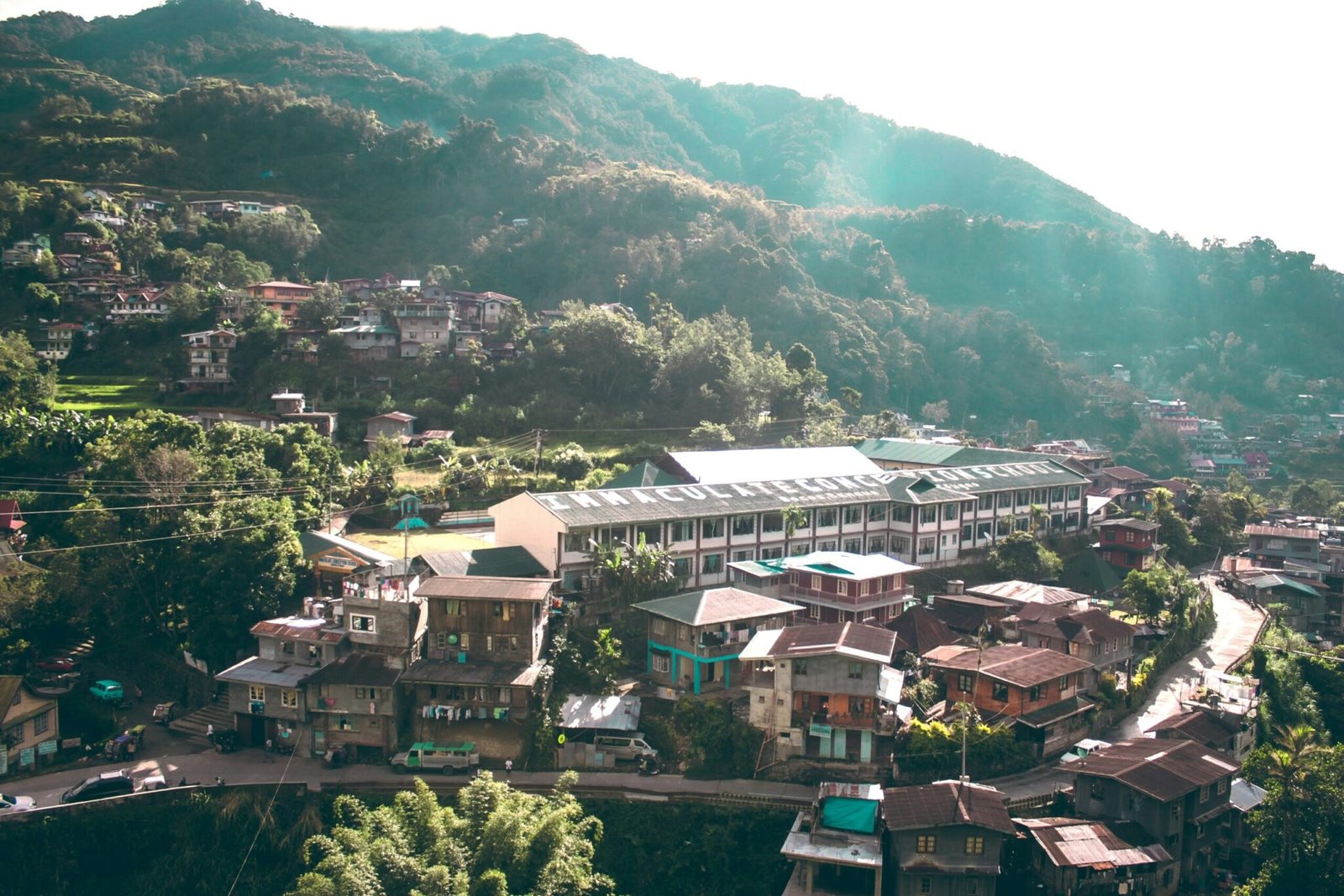

Respecting local customs is crucial. Always ask for permission before taking photos of people, especially in the indigenous communities. Learning a few basic phrases in the local language, Ifugao, can go a long way in showing respect and fostering goodwill.
Health and safety considerations include staying hydrated, using sun protection, and being cautious on uneven terrain. Tap water is not advisable for drinking; always opt for bottled or filtered water. Health clinics are available, but it’s wise to carry basic first-aid supplies.
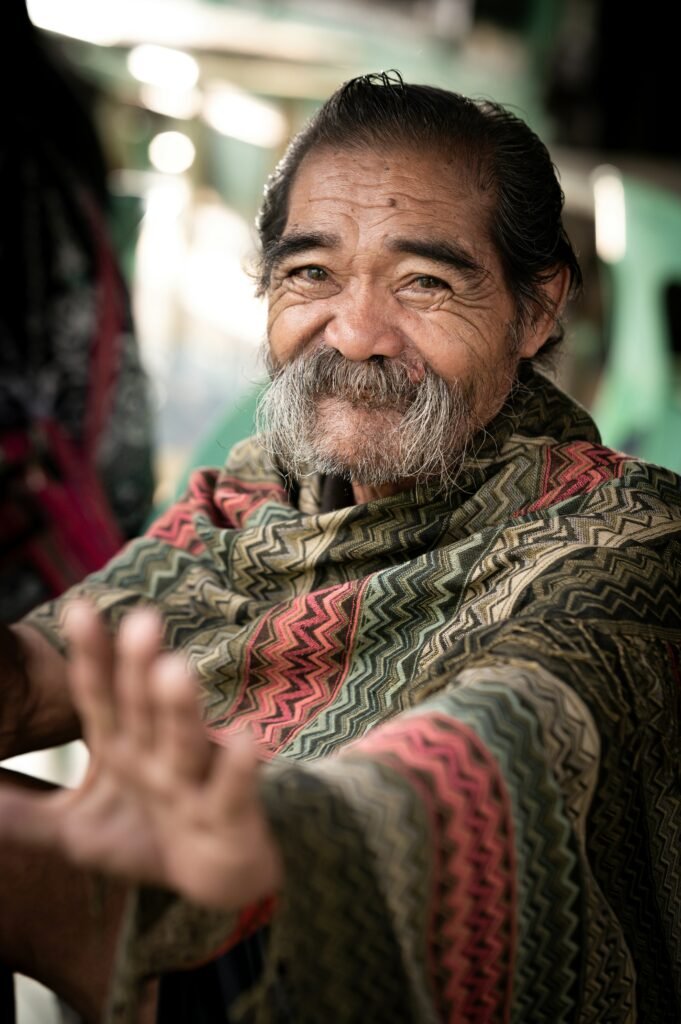

Banaue hosts several local festivals, with the Imbayah Festival being the most notable. Held every three years, it celebrates the rich cultural heritage of the Ifugao people with traditional music, dance, and games. Attending such events offers a deeper understanding of the local culture and traditions.
Finally, responsible tourism practices are essential to preserving Banaue’s natural and cultural heritage. Avoid leaving trash, respect wildlife, and support local businesses. By being mindful of your environmental impact, you contribute to the conservation of Banaue’s unique landscape and cultural legacy.

